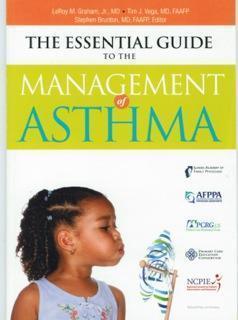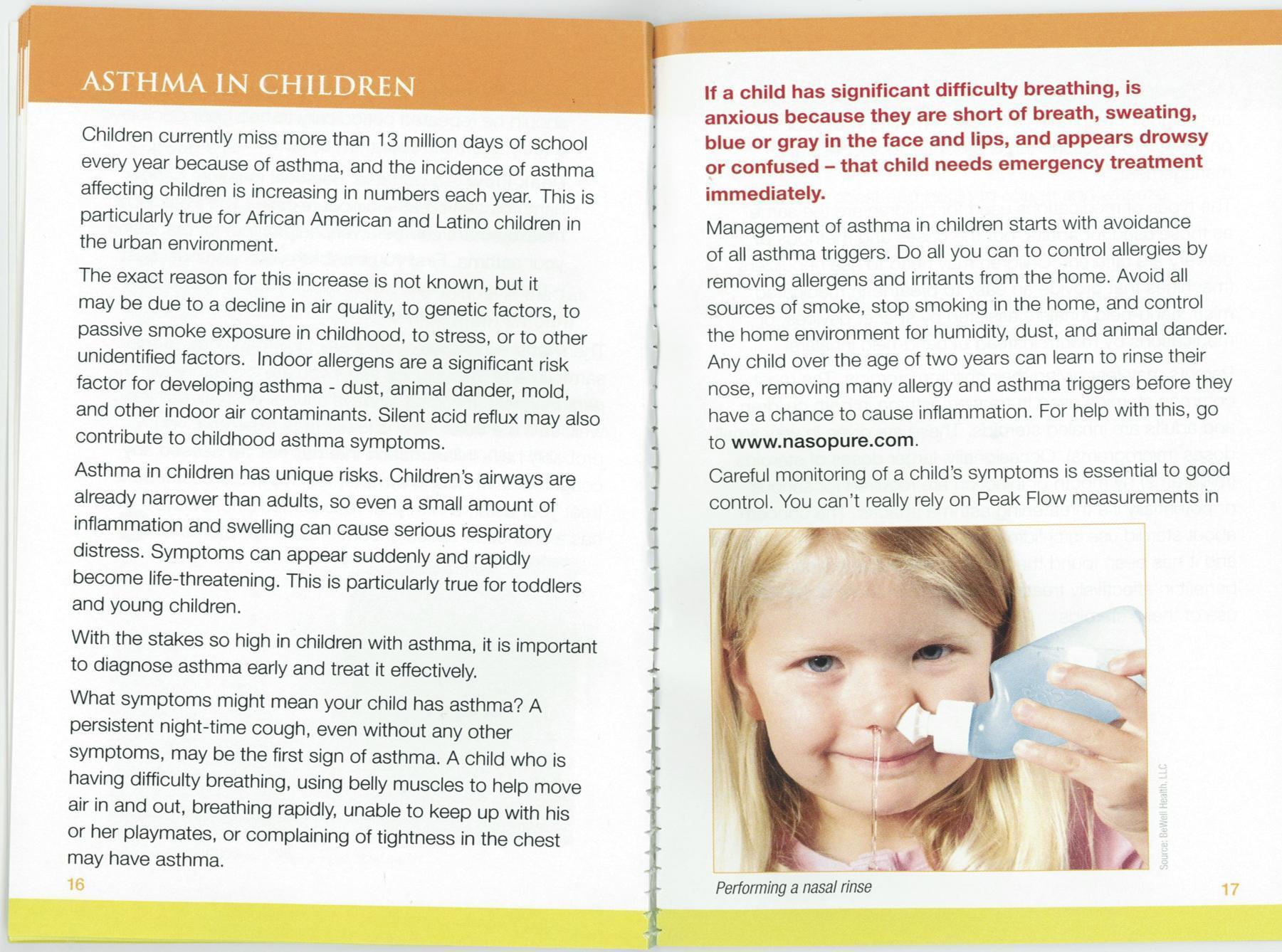Dr. Hana’s Nasopure was featured in the following Teva Asthma Management booklet by Stacey Kerr M.D.


Crisp cool air and the smell of wood smoke take me back to my childhood, when summer was over and the thrill of Halloween was just around the corner. But while the lovely scents of fall bring pleasure to many, to some children cool air and wood smoke are scary triggers that make it difficult to breathe. These children have asthma, and worldwide, their numbers are increasing each year.
At the very least asthma causes mild but embarrassing respiratory distress. At worst, it can be fatal. Because a child’s airways are narrower than an adult’s, triggers that cause only mild symptoms in adults can cause severe symptoms in a child.
Occasional signs of asthma can be as mild as a persistent nighttime cough. A more severe exacerbation may cause shortness of breath, rapid breathing, coughing or tightness in the chest. Any child having difficulty breathing associated with anxiety, sweating, blue lips, or a decreased level of alertness needs emergency care as soon as possible.
The first step to controlling asthma is making the diagnosis. A physician will consider the symptoms you report, listen to your child’s lungs, and may order some tests. Once asthma is diagnosed, you and the physician should create and use an asthma action plan to manage your child’s lung disease.
Prevention is the first part of any asthma action plan, starting with avoidance of identified asthma triggers. It is essential to avoid any exposure to cigarette smoke, including the residue left on a smoker’s clothes and hair. Pets may need to be kept outside, sheets washed in hot water to destroy dust mites, and humidity controlled to prevent mold. Any child over the age of two with asthma should learn to wash his nose, keeping his body’s air filter clean of allergens and dust.
The second step in controlling asthma is to monitor symptoms. Asthma’s earliest symptom is usually a cough. But by using a ‘peak flow meter,’ inflamed airways can be noted even before the cough appears. A peak flow meter is a simple handheld device that measures the maximum amount of air a child is able to force out of her lungs when she blows as hard as she can. Even mildly inflamed airways restrict the outflow of air, so a lower than expected peak flow can diagnose an asthma exacerbation before symptoms occur. This is the perfect time to treat.
When the airways are inflamed, they become swollen and produce mucus. Chronic inflammation remodels the airways, causing permanent damage. Some asthma medications are used for rescue during exacerbations, and some for control of chronic inflammation. Most of these medicines are inhaled so they can affect the airways directly.
Since the target for inhaled medication is the small airway system deep in the lungs, it is important to effectively use the right delivery system. Even young children can learn to use a nebulizer to successfully get medicine into their lungs.
Anyone using hand-held inhalers should use a spacer. This will help deliver medicine deep into the airways and prevent it from simply coating the mouth and the tongue.
Rescue medications for children are usually taken as soon as symptoms occur, and children with mild asthma may only occasionally need to use their rescue medicine. However, if an exacerbation is severe and does not respond quickly to the inhaler, your child may need oral or intravenous steroids.
Medicines to prevent exacerbations and to control chronic inflammation are the mainstay of asthma management. These are taken regularly every day, even when there are no symptoms. Inhaled steroids are usually the first choice of treatment to prevent airway swelling. If symptoms persist, other medications may need to be combined with steroids to gain adequate control.
Most of the time, asthma can be well controlled by preventing exacerbations and maintaining control of airway inflammation before it causes damage. But never underestimate the dangers of a severe asthma attack. Understanding the management of your child’s asthma can lead to effective treatment and allow her to breathe in the lovely scents of fall without fear.
For more information on the Web go to www.mayoclinic.com and search for “Childhood Asthma.”
Dr. Stacey Kerr, a longtime Sonoma County family physician, graduated from UC Davis Medical School and has been certified in her specialty by the American Board of Family Medicine. Her columns are not intended as a substitute for hand-on medical advice or treatment. Consult your health care provider before adhering to any recommendations in this column. Email comments to drkerr@the-doctors-inn.com.
